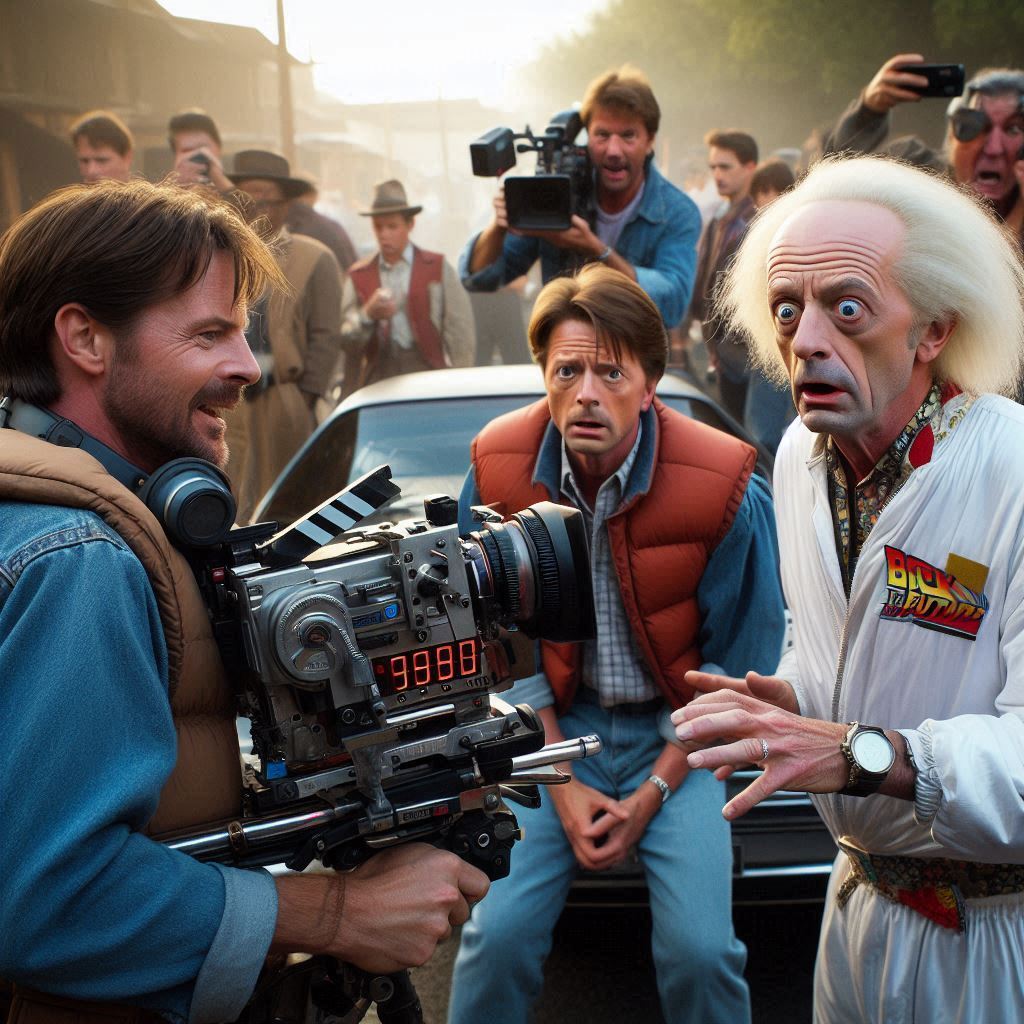The ‘Back to the Future’ trilogy stands as one of cinema’s most beloved time-travel adventures, captivating audiences since its 1985 debut. While fans worldwide can quote Marty McFly’s lines and recognize the iconic DeLorean at a glance, the fascinating behind-the-scenes journey of creating these films remains less known. From unexpected inspirations to last-minute casting changes, here’s a look at the remarkable story behind this cinematic masterpiece.
A Yearbook Sparked a Time-Travel Classic
The genesis of ‘Back to the Future’ came from a surprisingly personal moment. Writer Bob Gale was visiting his parents’ home when he discovered his father’s high school yearbook. Flipping through the pages, he wondered: “Would I have been friends with my dad if we’d met as teenagers?” This simple question evolved into one of the most innovative time-travel narratives in film history.
The Marty McFly That Almost Wasn’t
Few fans realize how close we came to experiencing a completely different Marty McFly. After rejections from numerous studios (including Disney, who found the mother-son storyline inappropriate), the film finally got the green light—but with Eric Stoltz cast as Marty. After several weeks of filming, director Robert Zemeckis made the difficult decision that Stoltz’s dramatic approach wasn’t capturing the comedic tone they envisioned.
In a high-stakes move that cost $4 million in reshoots, Michael J. Fox was brought in as a replacement. Despite his grueling schedule—filming the sitcom ‘Family Ties’ during the day and ‘Back to the Future’ at night—Fox’s energetic performance created the Marty McFly we know and love. Interestingly, one shot of Stoltz remains in the final film: it’s his fist (not Fox’s) that punches Biff in the diner scene.
Doc Brown’s Near Miss
Christopher Lloyd almost never played the eccentric Doc Brown. He initially declined the role, preferring a theater opportunity in New York. Thankfully, his wife convinced him to reconsider, leading to his iconic portrayal of the wild-haired scientist. Lloyd crafted the character by blending elements of Albert Einstein and conductor Leopold Stokowski, even adopting a hunched posture to appear shorter alongside Fox.
The Time Machine Evolution
The DeLorean wasn’t always the planned time machine. Early scripts featured a refrigerator as the time-travel device, but concerns about children potentially locking themselves inside real fridges prompted a change. The studio suggested a Ford Mustang, but Gale insisted that Doc Brown would drive something more unconventional. The DeLorean, with its gull-wing doors and stainless steel body, became the perfect futuristic vehicle—and a cultural icon.
Musical Magic and Cameo Surprises
Huey Lewis initially hesitated when asked to contribute music to the film. After reading the script, he delivered “The Power of Love” and “Back in Time,” songs that became inseparable from the movie’s identity. In a delightful meta-moment, Lewis himself appears in the film as a judge who rejects Marty’s band for being “too darn loud.”
Behind-the-Scenes Controversies
The production faced several challenges beyond the Stoltz recasting. Crispin Glover, who played George McFly, did not return for the sequels due to salary disputes. The filmmakers’ solution—using footage from the first film combined with another actor wearing prosthetics to resemble Glover—led to a lawsuit that ultimately changed how Hollywood handles actor likenesses.
The role of Jennifer Parker also saw changes. Melora Hardin was originally cast but replaced when it became apparent she was taller than Fox. Claudia Wells played Jennifer in the first film but stepped away due to personal circumstances, with Elisabeth Shue taking over for the sequels.
A Legacy That Transcends Time
The ‘Back to the Future’ trilogy has expanded beyond films to include an animated series, theme park attractions, and a musical. Its influence on popular culture remains profound, with references appearing in everything from television shows to video games.
The behind-the-scenes story of ‘Back to the Future’ reminds us that creating movie magic often involves unexpected challenges, bold decisions, and remarkable dedication. These production tales add another layer of appreciation for a trilogy that continues to delight audiences across generations, proving that great storytelling—like the best time machines—can transport us across decades while remaining timeless.





